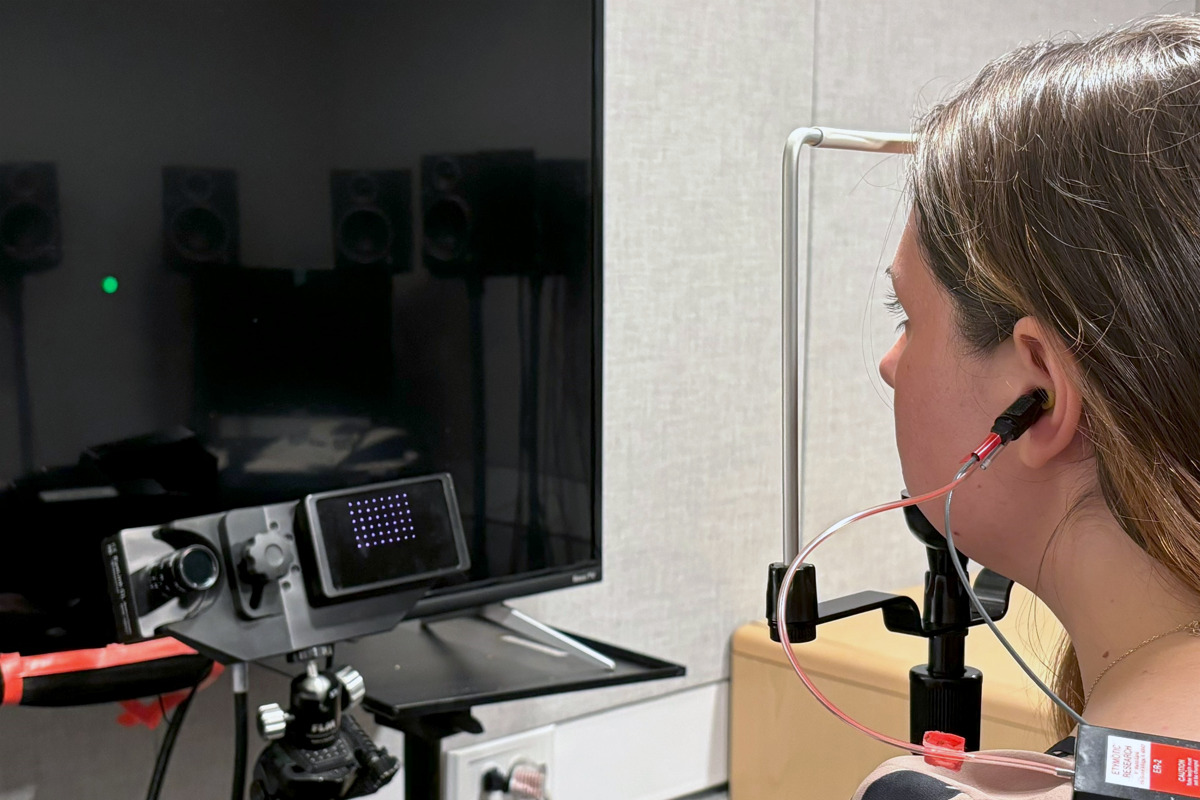Around 2012, Jennifer Groh and her colleagues began a series of experiments investigating the effect of eye movements on auditory signals in the brain. It wasn’t until years later that they noticed something curious in their data: In both an animal model and in people, eye movements coincide with ripples across the eardrum.
The finding, published in 2018, seemed “weird,” says Groh, professor of psychology and neuroscience at Duke University — and ripe for further investigation. “You can go your whole career never studying something that is anywhere near as beautifully regular and reproducible,” she says. “Signals that are really robust are unlikely to be just random.”
A new experiment from Groh’s lab has now taken her observation a step further and suggests the faint sounds — dubbed “eye movement-related eardrum oscillations,” or EMREOs for short — serve to link two sensory systems. The eardrum oscillations contain “clean and precise” information about the direction of eye movements and, according to Groh’s working hypothesis, help animals connect sound with a visual scene.
“The basic problem is that the way we localize visual information and the way we localize sounds leads to two different reference frames,” Groh says. EMREOs, she adds, play a part in relating those frames.
T
he brain, and not the eyes, must generate the oscillations, Groh and her colleagues say, because they happen at the same time as eye movements, or sometimes even before. To learn more about the oscillations, the team placed small microphones in the ears of 10 volunteers, who then performed visual tasks while the researchers tracked their eye movements.The EMREO data showed that horizontal and vertical eye movements generate unique sounds, such that the researchers could calculate the specific direction and angle of a participant’s eye movements based on their EMREOs. The data also revealed that EMREOs contain “some information about the starting position of the eyes,” Groh says. The group published their results in Proceedings of the National Academy of Sciences in November.




